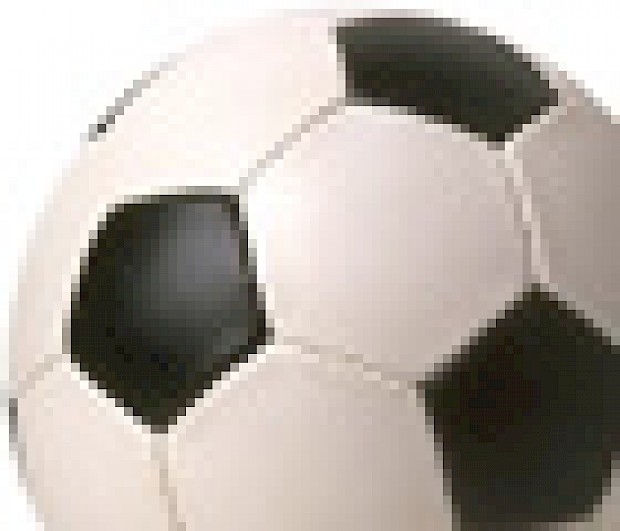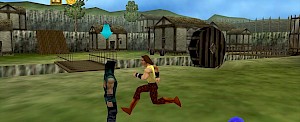Feature: A History Of Virtual Football - Part 2

Posted 04 Oct 2008 at 21:49 by Tom Phillips

Our favourite Nintendo platforms have seen many "serious" football titles over the years. We've already relived some of the best from the NES, SNES and early N64 days back in part one - be sure to check it out if you missed it first time around. Right now though, we'd like to bring things back up to date. Join us as we take a stroll down memory lane and delve into our more recent favourite virtual footballing moments...

 FIFA World Cup '98/'99
FIFA World Cup '98/'99
(N64 1997/1998)
As ISS 64 crucified all those who stood before it, EA seemed like a has-been. Yet EA now had brand power far greater than Konami could ever muster. With David Beckham adorning the front of the FIFA ’98 box and this being the year of the World Cup, FIFA went on to sell a massive amount of copies. Besting ISS' sales was possibly a crime to humanity yet coupled with the brand, FIFA was also multiplatform. Both FIFA '98 and 99 were actually great fun and '99 spruced up the graphics and tightened 98's gameplay model. Running in a similar fashion to its 32-bit cousins, FIFA ‘98 and '99 were great kick abouts on the N64.

 ISS 2000
ISS 2000
(N64 1999)
Just like previous ISS titles, ISS 2000 was developed by KCEO and was an exclusive for the N64 system. However, 2000 proved to be KCEO’s last ISS game for the N64 as Konami’s sister team KCET were having far more success on the PlayStation format with their Pro Evolution series. Yet their last game proved to be a fine exit for KCEO. Easily boasting the best animation on the N64, ISS also managed to throw more features into the mix. The commentary finally matched FIFA’s, the graphics were out of this world and the career mode was humorous (and brave!). We sunk more hours into dating girls than the football which is why we only ever made the national team once!
ISS 2000 will always remain in our hearts as the final football game for a system which seemed built for sports games. And we’ll never forget that dorm mother catching us with a seedy magazine!

 Fifa World Cup 2002
Fifa World Cup 2002
(GameCube 2001)
As another generation reared its head we were welcomed back by EA. It had been a long time as they had dumped the N64 back in 1999 due to the commercial success of the PS1. We weren’t complaining though, for when we played FIFA 2002 we were amazed by the progress EA had made. A free flowing passing game was finally upon us and although a lot of scripting remained we were again welcomed by the slick commentary and television-style presentation we loved back in 1995. We enjoyed FIFA 2002 far more than we thought we would have.

 ISS 2 & 3
ISS 2 & 3
(GameCube)
Coming as a surprise we were hoping ISS 2 and 3 would kick off where their N64 counterparts had left off. Unfortunately, whilst solid games, they never touched their predecessors. The passing systems were solid and the shooting mechanics enjoyable yet the lack of presentation was really starting to hurt the ISS franchise. Couple this with the vastly superior Pro Evolution Soccer series on the PS2 and we were starting to wonder if we would see any great footballing titles on our beloved GameCube.

 FIFA 2003-07
FIFA 2003-07
(GameCube)
As FIFA 2003 set the template 2002 hinted at, the tinkering at EA went into overdrive. As they had done throughout the 16-bit and 32-bit era, EA fine-tuned what was on the outside whilst adding a few major fixes when they had a “eureka” moment. With a new “feature” every year becoming the norm EA “off the ball” controls and the EA Bio occupied FIFA 2004 alongside the new manager mode. 2005 then built upon the manager mode and added the ability to create your own player.
FIFA 2005 also introduced the FIFA shop which has since become a staple of both the PES and FIFA games seen today. FIFA 2006 employed a whole new engine which gave the ball better physics as well as increased the amount of animation seen. EA then threw in more career details as well as team chemistry. On the pitch things had vastly changed and many applauded EA’s efforts. FIFA 2007 then updated the 2006 engine with a realistic physics system which primarily effected players tackling each other and the way the ball bobbled all over the place. With every passing iteration and every effort on EA’s behalf, it was instantly apparent that FIFA was edging closer and closer to the Pro Evolution Soccer standard seen on the Playstation 2.

 PES 2008
PES 2008
(Wii 2008)
As good as PES had been throughout the PS2 lifetime, it was showing signs of ageing. Again, a next-gen makeover was on the way yet with Wii we found out that next gen makeovers would mean something entirely different. When Konami decided they were coming back to the Nintendo camp (or doing an ‘EA’ by going where the cash was) we were overjoyed. What we got was revolutionary. The drag and drop approach of the controls are still confusing to all who see them but with time they prove to make sense and actually enhance the virtual game. 2009 will be the one to watch, as '08 laid such a brave foundation.

 Fifa 08/09
Fifa 08/09
(Wii)
EA played a great first hand when FIFA 2008 came to Wii. The graphics were a great step up from the 2007 Gamecube iteration and the gameplay was as solid as we had hoped. Further building on the foundations the 2006 engine created, the motion controls worked well and offered many play options. The one gripe we had was that it was light on features yet we were in the mindset that this was a first step for EA. And so with FIFA 2009 comes great hope. Not only have EA decided to build upon the 2008 outing, they have employed the brilliant pointer controls seen in PES 2008. And on the other side of the fence Konami have recently stated that they are employing traditional controls for PES 2009 on Wii.
We’ve had a good twenty years of football action on Nintendo consoles and have played some blinders, yet Konami and EA have been there time and time again. Now it appears that they are becoming closer than ever before. With Konami gaining more licences than previous and EA innovating on top of a solid foundation it seems that the future of football is in safe hands!





















